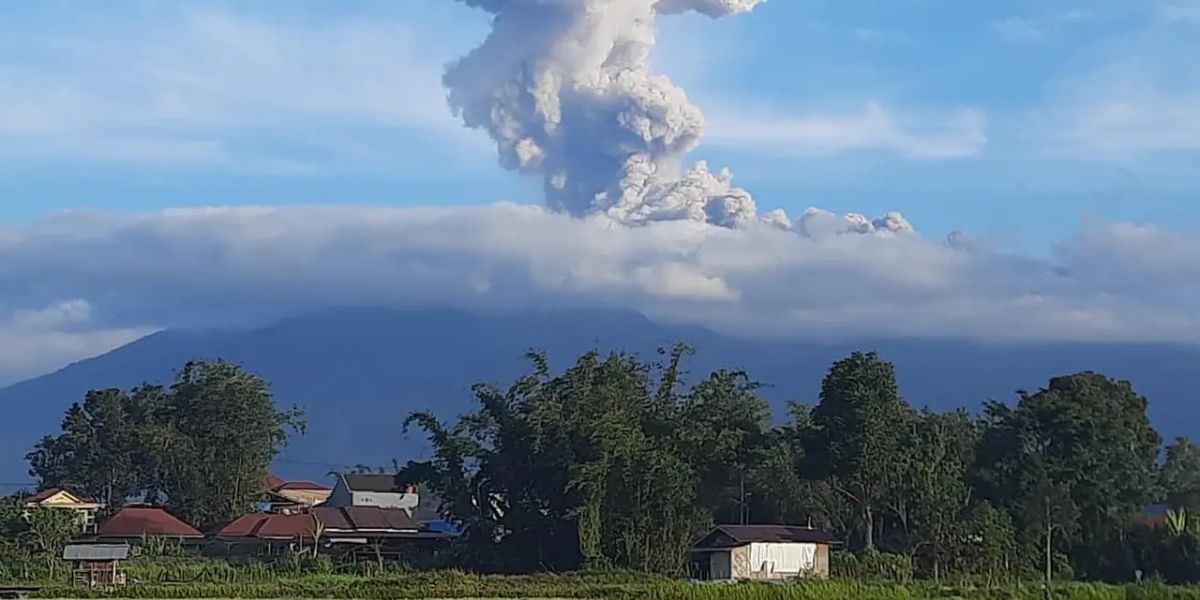Kapanlagi.com - Indonesia, a country rich in natural beauty, is also located on the Ring of Fire—an area along the Pacific coast known for its high volcanic activity and earthquakes.
With its geographical position at the meeting point of three major tectonic plates, Indonesia has more than 130 active volcanoes scattered throughout the archipelago. Of this number, around 76 volcanoes have a high eruption potential, making it very important for the community to understand the signs of an eruption and how to save themselves.
There are several indicators that can show that a volcano is about to erupt.
One of them is an increase in seismic activity around the volcano. Additionally, the emergence of smoke or toxic gas from the crater, changes in topography, and the release of volcanic materials such as lava and ash are warning signs that should not be ignored.
In emergency situations, knowledge of how to save oneself becomes crucial. The community is urged to avoid directly impacted areas, use masks to protect their respiratory systems, and always follow instructions from local authorities.
With a deep understanding of the signs of an eruption and rescue steps, it is hoped that the community can reduce risks and face such situations more prepared.
So, what are the signs that a volcano will erupt? Check out the complete explanation below, summarized by Kapanlagi.com from various sources on Friday, March 21, 2025.
1. Local Earthquakes
Local earthquakes often serve as an early signal of the potential eruption of a lurking volcano.
Signs that may appear around the volcano include increased volcanic activity, repetitive small earthquakes, changes in the shape of the ground surface, and the emergence of toxic gases.
Activity inside the volcano, such as magma movement, gas pressure, or the processes of emptying and filling the crater, can trigger these local earthquakes.
Various factors, such as the depth of the earthquake source, the condition of rock fractures, and the composition of the magma, also affect the strength and duration of the earthquakes.
Although volcanic earthquakes are a natural phenomenon that is difficult to predict, vigilance towards emerging signs is crucial for the community to prepare and take appropriate action.
2. Animals Descend from the Mountain
When animals suddenly descend from the mountain, it could be a very important natural sign, especially before a major disaster such as a volcanic eruption.
Their sharp instincts can detect subtle vibrations around the mountain that we might not notice, and their behavior can change drastically.
Cats, dogs, and livestock that are usually calm on the mountain slopes can become restless or even leave their homes, as if sensing an impending threat.
This phenomenon reminds us that animals have an extraordinary sensitivity to natural changes.
By paying attention to these signs, we can take anticipatory steps to distance ourselves from potential danger, making it very important to always be vigilant to the signals of nature given by living beings around us.
3. Temperature Increase
The rising temperatures around the volcano can be a sign of an impending threatening eruption.
One of the main signals to watch for is a sharp increase in crater temperature, an important indicator of magma activity within the Earth's belly.
Research shows that when crater temperatures soar, it can disrupt the environmental balance in the surrounding area, even causing a decline in groundwater that impacts the life of flora and fauna.
The animals in the area also begin to feel the tension, as if they are aware of the lurking threat.
Therefore, being vigilant about temperature increases around the volcano is a crucial step to anticipate potential eruptions that could happen at any time.
4. Drying Springs
After a volcanic eruption, an interesting yet concerning phenomenon often occurs: the springs in the vicinity experience drying up.
The extreme temperatures from lava and volcanic ash evaporate the surrounding water, while the intimidating pressure of magma hinders groundwater flow to the springs.
To address this issue, innovative measures need to be taken, such as restoring the land around the springs, planting water-filtering vegetation to prevent erosion, and building reservoirs or retention ponds to ensure water availability.
These efforts are crucial to maintaining the balance of the ecosystem and the survival of communities that depend on water sources around the volcano.
5. Withering Plants
Signs of potential volcanic eruptions can be observed from the condition of the surrounding plants.
One striking indicator is the wilting of plants due to soaring temperatures, which causes excessive water evaporation and leads to dry leaves.
This extreme temperature also affects the soil, making it dry and cracked, indicating increased magma activity beneath the Earth's surface. As magma approaches the surface, the temperature around the volcano skyrockets, affecting the health of the surrounding flora.
Therefore, if you see withering plants around a volcano, it is crucial to take preventive measures immediately.
First, stay away from the area and seek the latest information from local authorities about the volcano's status.
Also prepare emergency supplies and plan for evacuation if necessary, as safety is the top priority when facing this natural threat.
6. How to Save Yourself During and After a Volcanic Eruption
Volcanoes, with all their beauty, hold unpredictable danger potential. Take the example of the active Semeru volcano; its eruptions can occur at any time, often without warning.
Therefore, it is important for us to understand how to protect ourselves when facing this threat. First, remain calm and alert when you hear rumbling sounds or feel ground vibrations.
Quickly seek a safe place, away from potential landslides, hot lava, and toxic gases. Don't forget to use a mask or cloth to protect your breathing.
Avoid approaching affected areas, especially the summit of the volcano, and follow evacuation instructions from disaster response officials. After the eruption, stay away from the affected areas and follow the authorities' directions for rescue processes.
By recognizing the signs of an eruption and knowing the proper rescue methods, we can protect ourselves and our loved ones, as well as be better prepared for potential emergency situations.
(kpl/rao)
Disclaimer: This translation from Bahasa Indonesia to English has been generated by Artificial Intelligence.












